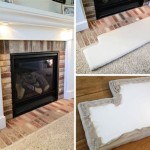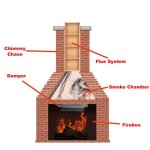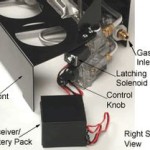```html
Gas Wall Fireplace Ideas: Enhancing Ambiance and Comfort
Gas wall fireplaces offer a compelling alternative to traditional wood-burning fireplaces, providing efficient heating, aesthetic appeal, and ease of use. They eliminate the need for wood storage and ash removal, making them a practical option for modern homes. These fireplaces come in a variety of styles, sizes, and designs, suitable for diverse architectural settings and personal preferences. This article explores various gas wall fireplace ideas, covering installation considerations, design options, and maintenance aspects.
Understanding Gas Wall Fireplace Installation
The installation of a gas wall fireplace is a critical step that requires adherence to local building codes and safety regulations. Improper installation can lead to hazardous situations, including gas leaks and carbon monoxide poisoning. It is strongly recommended that a qualified and licensed gas technician perform the installation. The technician will assess the existing gas line infrastructure or install a new one if necessary. The placement of the fireplace must consider the proximity to gas lines and ventilation systems. Many gas wall fireplaces require venting to the outside to expel combustion gases, while ventless models utilize catalytic converters to reduce emissions. However, local codes may restrict the use of ventless models. A permit is usually required from the local building department prior to commencing the installation.
The wall itself needs to be prepared to support the weight of the fireplace unit. Reinforcement may be necessary, particularly for heavier models or when installing on drywall. Fire-resistant materials, such as cement board or metal studs, should be used in the surrounding area to protect combustible materials. The gas line connection must be meticulously inspected for leaks using a gas leak detector solution. A carbon monoxide detector should be installed in the vicinity of the fireplace to provide an additional safety measure. After the installation, the technician will test the fireplace to ensure it functions correctly and safely.
Furthermore, it is vital to understand the different types of gas connections available. Natural gas and propane are the most common fuel sources. The fireplace model must be compatible with the existing gas supply. Conversion kits may be available to switch between natural gas and propane, but this should only be done by a qualified technician. The gas pressure needs to be within the specified range for the fireplace to operate efficiently. Proper ventilation is crucial, regardless of whether the fireplace is vented or ventless. Even ventless models require adequate airflow to prevent the buildup of pollutants. Regular inspections by a qualified technician are recommended to ensure the fireplace continues to operate safely and efficiently.
Exploring Design and Style Options
Gas wall fireplaces offer a wide array of design options to complement various interior decor styles. From sleek, modern designs to more traditional styles, there is a gas wall fireplace to suit nearly every taste. The firebox can be customized with different media, such as faux logs, glass beads, or river stones. These media not only enhance the aesthetic appeal but also contribute to therealistic flame effect. The flame height and intensity are typically adjustable, allowing users to create the desired ambiance. Many models come with remote controls for added convenience, enabling users to adjust the flame, temperature, and timer settings from a distance.
Framing the fireplace with decorative materials can further enhance its visual impact. Options include stone, brick, tile, wood, or metal. The choice of material should complement the surrounding decor and create a cohesive look. A mantel or surround can provide a focal point and add a touch of elegance. Consider incorporating built-in shelving or cabinets around the fireplace to create a functional and stylish feature wall. The size of the fireplace should be proportionate to the size of the room. A large fireplace in a small room can overwhelm the space, while a small fireplace in a large room may not be as impactful. The color of the fireplace and surrounding materials should also be carefully considered to create the desired mood and atmosphere.
Modern gas wall fireplaces often feature linear designs, characterized by long, horizontal fireboxes. These fireplaces create a contemporary and sophisticated look, ideal for minimalist or modern interiors. Traditional gas wall fireplaces often incorporate more ornate details, such as carved mantels and decorative trim. These fireplaces are well-suited for traditional or transitional interiors. Ventless gas wall fireplaces offer greater flexibility in terms of placement, as they do not require venting to the outside. Wall-mounted units can be easily installed in virtually any room, while recessed models offer a more streamlined and integrated look. Corner gas wall fireplaces are a great option for maximizing space and creating a unique focal point.
Maintaining and Troubleshooting Gas Wall Fireplaces
Regular maintenance is essential to ensure the safe and efficient operation of a gas wall fireplace. The frequency of maintenance depends on the usage and the specific model. A qualified technician should perform an annual inspection to check for gas leaks, carbon monoxide emissions, and other potential problems. The burner should be cleaned regularly to remove any debris or soot that may accumulate. The pilot light should be checked to ensure it is burning steadily and properly. The vent system, if applicable, should be inspected for obstructions and cleaned as needed.
Common troubleshooting issues include problems with the pilot light, ignition, or flame. If the pilot light fails to light or stay lit, check the gas supply and the thermocouple. The thermocouple is a safety device that shuts off the gas supply if the pilot light goes out. If the ignition fails, check the igniter electrodes and the gas valve. If the flame is weak or uneven, clean the burner and check the gas pressure. If you suspect a gas leak, immediately turn off the gas supply and contact a qualified technician. Never attempt to repair a gas wall fireplace yourself unless you are a qualified technician. Consult the manufacturer's instructions for specific maintenance and troubleshooting procedures.
Cleaning the glass front of the fireplace is also an important maintenance task. Use a non-abrasive glass cleaner specifically designed for fireplaces. Avoid using harsh chemicals or abrasive cleaners, as they can damage the glass. Dust and debris can accumulate on the surface of the fireplace, so regular dusting with a soft cloth is recommended. The area around the fireplace should be kept clear of combustible materials, such as curtains, furniture, and paper. Ensure that the ventilation system is operating properly to prevent the buildup of carbon monoxide. By following these maintenance and troubleshooting tips, you can ensure that your gas wall fireplace provides years of safe and reliable heating and ambiance.
```
7 Fireplace Surround Ideas That Will Ignite The Room

26 Contemporary Gas Fireplaces Ideas Fireplace

40 Best Gas Fireplace Designs To Elevate Your Decor In 2024 Design Sleek

40 Fabulous Fireplace Design Ideas For Any Budget Or Style

2024 Gas Fireplace Trends Design Regency

Fireplace Ideas The Home Depot

13 Stunning Fireplace Accent Wall Ideas For Your Home Carla Bast Design

40 Best Gas Fireplace Designs To Elevate Your Decor In 2024 Modern Design Contemporary Linear

Hole In The Wall Installation Guide Direct Fireplaces

Modern Gas Fireplaces
Related Posts








